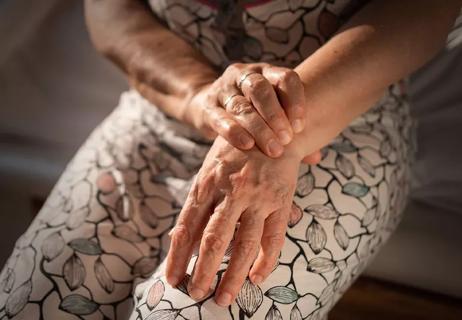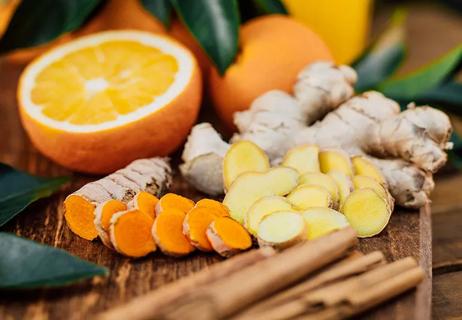Exercising can actually improve arthritis symptoms — and low-impact exercises are best

If you’re living with arthritis, you know the toll it can take. Weakness can make it tough to get through your day-to-day. Stiffness can make moving about a major hurdle. And that nagging pain won’t give you a break.
Advertisement
Cleveland Clinic is a non-profit academic medical center. Advertising on our site helps support our mission. We do not endorse non-Cleveland Clinic products or services. Policy
There’s no question that damage to your joints can make it harder to just get around in life, let alone exercise.
But here’s the thing: Exercising, to the extent that you can, can make a big difference in how severely arthritis affects your life. Now and in the future.
But it’s important to choose the right exercises and to exercise in a way that’s appropriate for you. Because the last thing you want is to risk further damage.
We talked with physical therapist Tobi Jevnikar, PT, and orthopaedic rehabilitation specialist Gary Calabrese, PT, DPT, about the best arthritis exercises, and how to keep yourself safe to reap the benefits.
Arthritis is caused by wear-and-tear damage on your joints. So, the best arthritis exercises are ones that don’t add additional pressure to those already compromised areas.
“Low-impact exercise is typically the best route for people living with arthritis,” Jevnikar says. “You want to choose exercises that will help you gain strength and increase your range of motion without compressing your affected joints.”
Jevnikar suggests these exercises for people with arthritis.
A dedicated walking program can help you give your body a chance to get up and about and work out the kinks.
Advertisement
Jevnikar suggests starting with short walks on a flat surface. No uphill treks until you build up your endurance and know what your body is capable of. Too much too fast can lead to injuries and derail your routine.
And walking outside or on an indoor track can often be a better experience than a treadmill.
“With a treadmill, you have to keep up because it’s going to keep going with or without you,” Jevnikar points out. “But if you’re walking around the block or at a park, you can more naturally speed up and slow down as you need to.”
Pool-based exercises can be a safe and effective route for people with arthritis to get some exercise. That’s because the buoyancy of being in water can take stress off your joints.
Water workouts can include:
“Exercising in the water can be a great way to work out without putting pressure on your joints,” Jevnikar shares. “The resistance of moving against water can help with strengthening your muscles, and the extra activity can help burn calories and aid weight loss.”
Not sure where to start? Check with your local gym or rec center pool for water aerobics classes.
Whether you prefer a stationary bike or getting out on the trails, biking can be a good choice for people with arthritis.
Because you’re seated, you don’t have the effect of gravity compressing your joints when you ride.
If you prefer biking outdoors, start with short rides on well-paved areas and work your way up to longer, more intense rides, if that’s your goal. (And, of course, don’t forget your helmet!)
Elliptical machines can be another option for getting a low-impact workout that is easier on your joints.
Because your feet are supported on an elliptical machine, you’re not actually lifting and planting your foot like you do when walking or jogging. That means that your joints aren’t enduring the impact of landing on your feet repeatedly.
Let’s be clear: Exercising isn’t going to make arthritis go away. You aren’t going to regrow lost cartilage that’s causing those bone-on-bone aches. But exercise can help you to feel better and improve your quality of life.
There are three main goals for exercising with arthritis:
Stability can be regained with strengthening and stretching.
But there’s a “use it or lose it” factor for both flexibility and mobility. The more you’re able to use your muscles, the longer you can keep them working for you.
Advertisement
“Overall, exercise can help you ease many arthritis symptoms,” Dr. Calabrese notes. “The endorphins released by a good workout can help to reduce your pain. And the weight you lose over time can ease stress on achy joints.”
On the flip side, inactivity can make things worse.
“Too little exercise can lead you down the path of immobility and can likely cause more pain in your future,” Dr. Calabrese warns. “You really want to try not to use your arthritis as a reason for not exercising.”
Worrying about injuries and pain is a common reason people with arthritis are wary of exercise.
And for good reason. Doing too much exercise or exercises that aren’t appropriate for you can do some additional damage. (That’s true of any exercise program — arthritis or not.)
It’s always best to talk with a healthcare provider (like a primary care provider or physical therapist) about your symptoms and limitations before beginning an exercise program.
That’s especially important if you’re living with arthritis in multiple areas of your body or if you have other health conditions. Chronic conditions, and the medications you take for them, may limit the types of exercise you can do — and at what intensity.
Ask a provider for advice about what would be best for you. They can help you develop goals and develop a plan that will work best for you.
Advertisement
Dr. Calabrese suggests starting with a modest goal of 20 minutes of exercise at a time three times per week.
“If you have arthritis, you need to ease yourself into any new exercise program and tailor it to your specific condition,” he states. “You can also try smaller doses of your favorite activities. For example, if you have lower back problems but can’t bring yourself to give up golf, try playing nine holes at a time instead of 18.”
The old-school “no pain, no gain” advice may work for hardcore athletes, but it’s not appropriate for someone with arthritis, Dr. Calabrese says.
A little muscle soreness or fatigue while working out is normal. But don’t ignore joint pain that lingers or gets worse. That’s a sign you need to rest and rethink your program.
“Respect your pain but also respect your arthritis,” she adds. “If you exercise properly, you can improve both.”
Bottom line: The best arthritis exercises get you up and moving while taking it easy on your joints. And they can make a big difference in how arthritis affects your life.
Advertisement
Learn more about our editorial process.
Advertisement

Research doesn’t show any benefits to wearing copper bracelets — but your experience may vary

Yes, your genetic makeup may increase your risk of developing arthritis, but other factors like age and weight can play a role, too

Both types of therapy work differently, but they can both alleviate symptoms — especially when you alternate methods

The process usually starts with your primary care provider, who may refer you to a rheumatologist or orthopaedist

Simple exercises like tendon glides and finger lifts can have a big impact

Research is inconclusive, so don’t stop eating tomatoes, potatoes and peppers just yet

Adding these simple foods to your diet can make a big difference

Here's how to make yourself more comfortable behind the wheel

If you’re feeling short of breath, sleep can be tough — propping yourself up or sleeping on your side may help

If you fear the unknown or find yourself needing reassurance often, you may identify with this attachment style

If you’re looking to boost your gut health, it’s better to get fiber from whole foods